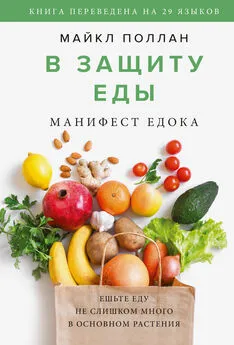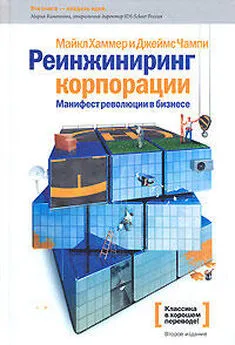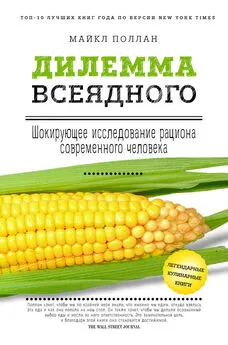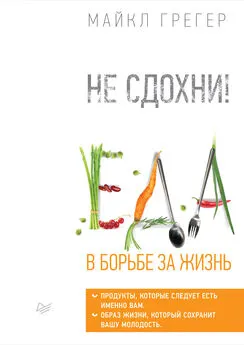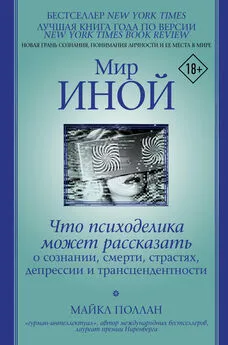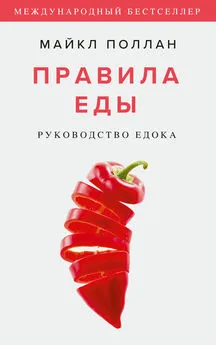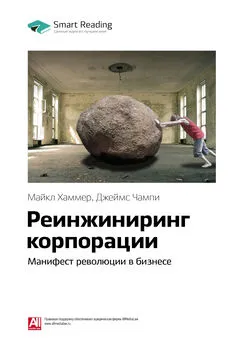Майкл Поллан - В защиту еды. Манифест едока
- Название:В защиту еды. Манифест едока
- Автор:
- Жанр:
- Издательство:Литагент МИФ без БК
- Год:2021
- Город:Москва
- ISBN:9785001696513
- Рейтинг:
- Избранное:Добавить в избранное
-
Отзывы:
-
Ваша оценка:
Майкл Поллан - В защиту еды. Манифест едока краткое содержание
Майкл Поллан призывает перестать изучать списки труднопроизносимых ингредиентов на упаковках, отказаться от модных диет и заново разобраться, что же такое правильное питание. Следуя его простым советам, вы сможете составить оптимальный именно для вас рацион, чтобы поддерживать хорошее самочувствие и быть счастливыми.
На русском языке публикуется впервые.
В защиту еды. Манифест едока - читать онлайн бесплатно ознакомительный отрывок
Интервал:
Закладка:
Ryan, M.H., et al. “Grain Mineral Concentrations and Yield of Wheat Grown Under Organic and Conventional Management.” Journal of the Science of Food and Agriculture. 84 (2004): 207–216.
Schmid, Ronald. The Untold Story of Milk (Washington, D.C.: New Trends Publishing Inc., 2007).
Voisin, André. Soil, Grass and Cancer (Austin: Acres U.S.A., Publishers, 1999).
White, P.J., and M. R. Broadley. “Historical Variation in the Mineral Composition of Edible Horticultural Products.” Journal of Horticultural Science & Biotechnology. 80.6 (2005): 660–667.
Статистические данные, свидетельствующие о том, как в ХX веке менялись американская диета и вся система производства и распространения пищевых продуктов:
U.N. Food and Agriculture Organization (FAO). FAOSTAT Statistical Database: “Agriculture/Production/Core Production Data.” Доступно на странице http://faostat.fao.org.
USDA Economic Research Service. “Major Trends in U.S. Food Supply, 1909–99.” FoodReview. 23.1 (2000).
USDA Economic Research Service. “U.S. Food Supply Providing More Food and Calories.” FoodReview. 22.3 (1999).
USDA Economic Research Service. “U.S. per Capita Food Supply Trends: More Calories, Refined Carbohydrates, and Fats.” FoodReview. 25.3 (2002).
О том, что принципы некоторых диет влияют на здоровье человека иначе, чем отдельно взятые питательные вещества:
Ames, Bruce N. “Increasing Longevity by Tuning Up Metabolism.” European Molecular Biology Organization. 6 (2005): S20–S24. Подробнее об исследовании дефицита питательных веществ, проведенном Эймсом, см.: www.bruceames.org.
Ames, Bruce N. “Low Micronutrient Intake May Accelerate the Degenerative Diseases of Aging Through Allocation of Scarce Micronutrients by Triage.” Proceedings of the National Academy of Sciences. 103.47 (2006): 17589–17594.
Appel, Lawrence J. “A Clinical Trial of the Effects of Dietary Patterns on Blood Pressure.” The New England Journal of Medicine. 336.16 (1997): 1117–1124.
de Lorgeril, Michel. “Mediterranean Diet, Traditional Risk Factors, and the Rate of Cardiovascular Complications After Myocardial Infarction: Final Report of the Lyon Diet Heart Study.” Journal of the American Heart Association. 99 (1999): 779–785.
Jacobs, David R., et al. “Nutrients, Foods, and Dietary Patterns as Exposures in Research: A Framework for Food Synergy.” American Journal of Clinical Nutrition. 78 suppl (2003): 508S–513S. Это исследование продуктов из цельного зерна, о котором я говорю в разделе «От цельных продуктов к переработанным».
Liu, Simin, et al. “Fruit and Vegetable Intake and Risk of Cardiovascular Disease: The Women’s Health Study.” American Journal of Clinical Nutrition. 72 (2000): 922–928.
Planck, Nina. Real Food: What to Eat and Why (New York: Bloomsbury, 2006).
Weil, Andrew. Healthy Aging: A Lifelong Guide to Your Physical and Spiritual Well-Being (New York: Knopf, 2005).
О том, как набирают популярность продукты, прошедшие существенную технологическую обработку:
Drummond, J.C. The Englishman’s Food: A History of Five Centuries of English Diet (Oxford: Alden Press, 1939).
Levenstein, Harvey. Paradox of Plenty: A Social History of Eating in Modern America (Berkeley: University of California Press, 2003).
Levenstein, Harvey. Revolution at the Table: The Transformation of the American Diet (Berkeley: University of California Press, 2003).
Perren, Richard. “Structural Change and Market Growth in the Food Industry: Flour Milling in Britain, Europe, and America, 1850–1914.” Economic History Review. 43.3 (1990): 420–437.
Shapiro, Laura. Perfection Salad: Women and Cooking at the Turn of the Century (New York: Random House, 2001).
Shapiro, Laura. Something from the Oven: Reinventing Dinner in 1950s America (New York: Penguin, 2005).
Tannahill, Reay. Food in History (New York: Stein and Day, 1973).
Tisdale, Sally. The Best Thing I Ever Tasted: The Secret of Food (New York: Riverhead, 2001).
Об омега-3 и омега-6 жирных кислотах:
Allport, Susan. The Queen of Fats: Why Omega-3s Were Removed from the Western Diet and What We Can Do to Replace Them (Berkeley: University of California Press, 2006). На данный момент это лучшая работа в сфере научной журналистики по теме омега-3 жирных кислот.
Allport, Susan. “The Skinny on Fat.” Gastronomica – The Journal of Food and Culture. 3.1 (2003): 28–36.
Carlson, Susan E., and Martha Neuringer. “Polyunsaturated Fatty Acid and Neurodevelopment: ASummary and Critical Analysis of the Literature.” Lipids. 34.2 (1999): 171–178.
Hibbeln, J.R., et al. “Dietary Polyunsaturated Fatty Acids and Depression: When Cholesterol Doesn’t Satisfy.” American Journal of Clinical Nutrition. 62 (1995): 1–9.
Hibbeln, J.R., et al. “Healthy Intakes of n-3 and n-6 Fatty Acids: Estimations Considering Worldwide Diversity.” American Journal of Clinical Nutrition. 83 (2006).
Hibbeln, J.R., et al. “Increasing Homicide Rates and Linoleic Acid Consumption Among Five Western Countries, 1961–2000.” Lipids. 39.12 (2004).
Holman, Ralph T. “The Slow Discovery of the Importance of Omega-3 Fatty Acids in Human Health.” Этот материал был представлен на научной конференции Evolution of Ideas About the Nutritional Value of Dietary Fat, проведенной в ходе встречи Experimental Biology 97 в апреле 1997 года, и опубликован в 1998 году организацией American Society for Nutritional Sciences.
Kris-Etherton, P.M., et al. “Polyunsaturated Fatty Acids in the Food Chain in the United States.” American Journal of Clinical Nutrition. 71 (2000): 179S–188S.
Mozaffarian, Dariush, and Eric B. Rimm. “Fish Intake, Contaminants, and Human Health: Evaluating the Risks and the Benefits.” Journal of the American Medical Association. 296.15 (2006): 1885–1899.
Nesheim, Malden C., et al. “Seafood Choices: Balancing Benefits and Risks” (Washington D.C.: National Academies Press, 2006).
Pischon, Tobias, et al. “Habitual Dietary Intake of n-3 and n-6 Fatty Acids in Relation to Inflammatory Markers Among US Men and Women.” Circulation. 108 (2003): 155–160.
Simopoulos, Artemis P., and Jo Robinson. The Omega Diet: The Lifesaving Nutritional Program Based on the Diet of the Island of Crete (New York: HarperCollins, 1998).
Uauy, Ricardo, et al. “Essential Fatty Acids in Visual and Brain Development.” Lipids. 36.9 (2001): 885–895.
Об увеличении числа пациентов, страдающих диабетом второго типа
Boyle, James P., et al. “Projection of Diabetes Burden Through 2050: Impact of Changing Demography and Disease Prevalence in the U.S.” Diabetes Care. 24 (2001): 1936–1940.
Gregg, Edward W., et al. “Trends in the Prevalence and Ratio of Diagnosed to Undiagnosed Diabetes According to Obesity Levels in the U.S.” Diabetes Care. 27 (2004): 2806–2812.
Haslam, David W., and W. Philip T. James. “Obesity.” The Lancet. 336 (2005): 1197–1209.
Kleinfield, N.R. “Diabetes and Its Awful Toll Quietly Emerge as a Crisis.” The New York Times (January 9, 2006).
Kleinfield, N.R. “Living at an Epicenter of Diabetes, Defiance and Despair.” The New York Times (January 10, 2006).
Narayan, K. M. Venkat, et al. “Lifetime Risk for Diabetes Mellitus in the United States.” Journal of the American Medical Association. 290.14 (2003): 1884–1890.
O’Connor, Andrew S., and Jeffrey R. Schelling. “Diabetes and the Kidney.” American Journal of Kidney Diseases. 46.4 (2005): 766–773.
Olshansky, S. Jay, et al. “A Potential Decline in Life Expectancy in the United States in the 21st Century.” The New England Journal of Medicine. 352.11 (2005): 1138–1145.
Poinasamy, Darren. “Facing Up to the Diabetes Threat in the US.” Business Briefing: US Pharmacy Review. (2004): 48–50.
Urbina, Ian. “In the Treatment of Diabetes, Success Often Does Not Pay.” The New York Times (January 11, 2006).
Wild, Sarah, et al. “Global Prevalence of Diabetes: Estimates for the Year 2000 and Projections for 2030.” Diabetes Care. 27.5 (2004): 1047–1053.
Глава 2. Ешьте еду, или Что такое настоящая еда
Allport, Susan. The Primal Feast: Food, Sex, Foraging, and Love (Lincoln, NB: iUniverse Inc., 2000).
American Journal of Clinical Nutrition // Marion Nestle, et al. ed. 61 suppl (1995): 1313–1320. В этом издании речь идет о преимуществах средиземноморской диеты.
Appel, Lawrence J. “A Clinical Trial of the Effects of Dietary Patterns on Blood Pressure.” The New England Journal of Medicine. 336.16 (1997): 1117–1124.
Brown, Melody J., et al. “Carotenoid Bioavailability Is Higher from Salads Ingested with Full-Fat Than with Fat-Reduced Salad Dressings as Measured with Electrochemical Detection.” American Journal of Clinical Nutrition. 80 (2004): 396–403.
de Lorgeril, Michel. “Mediterranean Diet, Traditional Risk Factors, and the Rate of Cardiovascular Complications After Myocardial Infarction: Final Report of the Lyon Diet Heart Study.” Journal of the American Heart Association. 99 (1999): 779–785.
Feenstra, Gail. “The Roles of Farmers’ Markets in Fueling Local Economies.” Gastronomic Sciences. 1 (2007).
Fielding, Jeanette M., and Kerin O’ Dea, et al. “Increases in Plasma Lycopene Concentration After Consumption of Tomatoes Cooked with Olive Oil.” Asia Pacific Journal of Clinical Nutrition. 14.2 (2005): 131–136.
Gussow, Joan Dye. “Why You Should Eat Food, and Other Nutritional Heresies.” Speech, University of California, Davis, Plant & Environmental Sciences. November 7, 2003.
Hu, Frank B., et al. “Prospective Study of Major Dietary Patterns and Risk of Coronary Heart Disease in Men.” American Journal of Clinical Nutrition. 72 (2002): 912–921.
Johnston, Francis E. “Food and Biocultural Evolution: A Model for the Investigation of Modern Nutritional Problems.” Nutritional Anthropology (Philadelphia: University of Pennsylvania, 1987).
Kouris-Blazos, Antigone, et al. “Are the Advantages of the Mediterranean Diet Transferable to Other Populations? A Cohort Study in Melbourne, Australia.” British Journal of Nutrition. 82 (1999): 57–61.
Milburn, Michael P. “Indigenous Nutrition.” American Indian Quarterly. 28.3 (2004): 411–434.
Nabhan, Gary Paul. Why Some Like It Hot: Food, Genes, and Cultural Diversity (Washington, D.C.: Island Press, 2004).
Nestle, Marion. What to Eat (New York: North Point Press, 2006).
Planck, Nina. Real Food: What to Eat and Why (New York: Bloomsbury, 2006).
Sherman, Paul W., and Jennifer Billing. “Darwinian Gastronomy: Why We Use Spices.” Bioscience. 49.6 (1999): 453–463.
Читать дальшеИнтервал:
Закладка:
